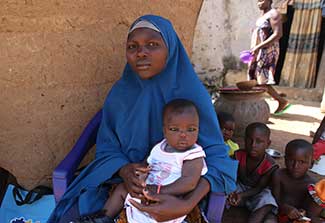Fogarty publishes HIV concept mapping project
May / June 2021 | Volume 20 Number 3
 Photo by Akintunde Akinleye/NURHIFogarty scientists have led a concept mapping exercise for HIV prevention and intervention programs targeting adolescents in sub-Saharan Africa.
Photo by Akintunde Akinleye/NURHIFogarty scientists have led a concept mapping exercise for HIV prevention and intervention programs targeting adolescents in sub-Saharan Africa.
A team of scientists has completed a concept mapping exercise to identify factors that impact the implementation of HIV prevention and intervention programs for adolescents in sub-Saharan Africa. The project was
published as an open-access article in the journal Implementation Science Communications and is part of the NIH-Fogarty
Adolescent HIV Implementation Science Alliance (AHISA) Initiative.
AHISA participants responded to the question: “In your experience, what factors have facilitated or hindered implementation of evidence-based HIV prevention or treatment for adolescents in sub-Saharan Africa?” The results were sorted into thematically relevant groups and each statement was ranked on its importance and changeability. In all, 15 distinct themes emerged. “Workforce/Workflow” and “HIV Stigma and Adolescent Development” were rated highest for importance, and “Threshold Conditions for Treatment” and “Structure of Implementation Efforts” were rated most changeable.
“Understanding implementation science determinants and mechanisms can facilitate the uptake of successful implementation and sustainment strategies for the prevention and treatment of HIV in a given context,” the authors noted. The findings are intended to improve the scale-up of evidence-based practices for adolescent HIV prevention and treatment in sub-Saharan Africa. The authors suggest approaches that consider the determinants and mechanisms identified in the study will likely have utility for other health conditions and contexts.
More Information
To view Adobe PDF files,
download current, free accessible plug-ins from Adobe's website.
Related World Regions / Countries
Related Global Health Research Topics